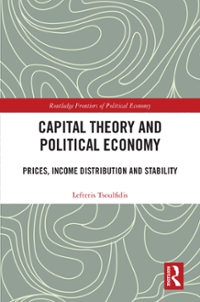Question
This questions is based on the article, What next for the EU's fiscal rules?, published by The Economist on October 29, 2020 (https://www.economist.com/finance-and-economics/2020/10/31/what-next-for-the-eus-fiscal-rules). The article
This questions is based on the article, "What next for the EU's fiscal rules?," published by The Economist on October 29, 2020 (https://www.economist.com/finance-and-economics/2020/10/31/what-next-for-the-eus-fiscal-rules). The article discusses the experience of the Eurozone with fiscal rules that the European Union (EU) had adopted as part of the 1992 Maastricht treaty in preparation for the adoption of a common currency, the euro, in a monetary union. The center piece of those rules were caps on budget deficit (3% of GDP) and public debt (60% of GDP). These basic rules were modified in 2010s in response to the problems that the member countries encountered. In reading the article and answering the questions below, please note that "structural deficit" means the deficit that would have prevailed if the economy were operating at its production capacity given the government's tax and expenditure policies.
QuestionThe article points out that the EU's has currently suspended its fiscal rules until the end of 2021. How would this suspension help the recovery of the EU economy? Would the policies adopted during that suspension make it easier for the EU member countries to move toward compliance with the fiscal rules in 2022 and beyond? Please explain your answer.
Step by Step Solution
There are 3 Steps involved in it
Step: 1

Get Instant Access to Expert-Tailored Solutions
See step-by-step solutions with expert insights and AI powered tools for academic success
Step: 2

Step: 3

Ace Your Homework with AI
Get the answers you need in no time with our AI-driven, step-by-step assistance
Get Started


